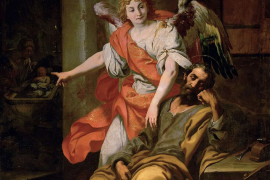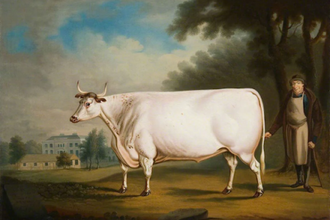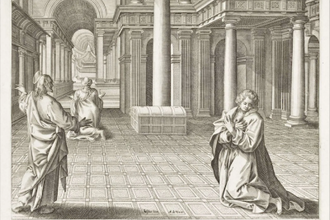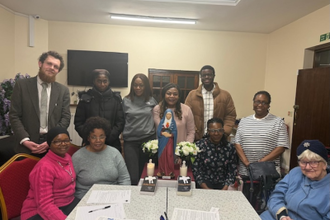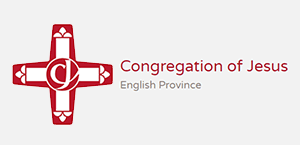Gospel in Art: The Parable of the King giving a Wedding Feast
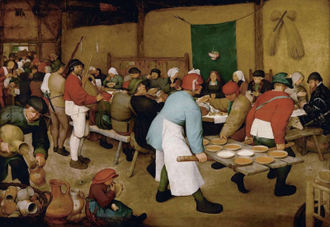
The Peasant Wedding by Pieter Breughel the Elder, 1567 © Kunsthistorisches Museum, Vienna, Austria
Source: Christian Art
Gospel of 21 August 2025
Matthew 22:1-14
At that time: Jesus again spoke to the chief priests and the elders of the people, in parables, saying, 'The kingdom of heaven may be compared to a king who gave a wedding feast for his son, and sent his servants to call those who were invited to the wedding feast, but they would not come. Again he sent other servants, saying, "Tell those who are invited, 'See, I have prepared my dinner, my oxen and my fat calves have been slaughtered, and everything is ready. Come to the wedding feast.' " But they paid no attention and went off, one to his farm, another to his business, while the rest seized his servants, treated them shamefully, and killed them. The king was angry, and he sent his troops and destroyed those murderers and burned their city. Then he said to his servants, "The wedding feast is ready, but those invited were not worthy. Go therefore to the main roads and invite to the wedding feast as many as you find." And those servants went out into the roads and gathered all whom they found, both bad and good. So the wedding hall was filled with guests.
'But when the king came in to look at the guests, he saw there a man who had no wedding garment. And he said to him, "Friend, how did you get in here without a wedding garment?" And he was speechless. Then the king said to the attendants, "Bind him hand and foot and cast him into the outer darkness. In that place there will be weeping and gnashing of teeth." For many are called, but few are chosen.'
Reflection on the painting
Pieter Brueghel the Elder's The Peasant Wedding, painted in 1567, presents a lively rustic wedding set in a barn during the summer. The scene is bustling with guests, music, and simple food; bread, porridge, and soup are served on rough wooden tables and benches. At the centre sits the bride, crowned and framed by a green textile hanging, yet strikingly passive. She neither eats nor engages with the celebration, appearing almost statuesque, almost like a sculpted image of the Virgin, serene. Scholars often find symbolic and moral undertones in Brueghel's work, and here many interpret a quiet warning against the sin of gluttony. Nearly every figure, save for the bride, seems preoccupied with food. Even one of the musicians stares toward the food servers with longing, his mind clearly elsewhere.
What is most striking, however, is the figure Brueghel chooses to highlight: the servant. Dressed in a light blue shirt and white apron, he is the largest figure in the composition-larger than the bride, the musicians, or any official. In a painting about celebration, it is the one who serves who commands the artist's attention. And while the meal appears hearty, there's little joy in the bride's face, and not much food on the plates. Humility, service, and restraint are subtly juxtaposed with indulgence, distraction, and a lack of spiritual awareness. The deeper meaning of the painting remains elusive. Is it a moral critique, a satire, or a simple observation of peasant life? We don't exactly know.
Yet beneath the rustic scene lies a timeless echo of the Gospel image: the wedding banquet as a symbol of the Kingdom of Heaven. God extends His invitation to all, generously, joyfully. And a place is prepared for each of us. But an invitation, no matter how gracious, must be accepted. Every day, we are free to respond with a simple yes or a no. And while the offer is abundant, it is never to be taken for granted. Let us treasure the invitation, approach the table with reverence, and love the One who calls us to his banquet.
LINKS
Gospel in Art: https://christian.art/
Today's Reflection: https://christian.art/daily-gospel-reading/matthew-22-1-14-2025/



